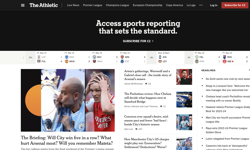At the start of 2009, we were aware that a storm was coming; nevertheless the publishing industry carefully watched the economic woes of the US unfold ‘across the water’ and were hopeful that it wouldn’t affect the UK market to the same extent. Therefore our 2009 Organisation Census, published in March, revealed AOP members were in a confident mood for the coming year.....
All business were battered through the following nine months, but the majority of the publishing industry battened down the hatches, and kept a vigilant eye on their business models by developing their offering for their B2B and B2B target markets. In reality, and unsurprisingly, most of the forecasts when compared to actual stats, turned out to be flatter or lower than predicted, where half of AOP members claimed growth but the other half saw revenues tumble as the recession took its grip. But even by October, when the second part of the Census (Content & Trends) was published: AOP members remained pragmatic about the long-term future of their businesses.
Growth in 2010
So we now have an industry that is starting to emerge from one of the toughest recessions in recent years. And the UK’s leading digital publishers are predicting that 2010 is going to be a good year with both revenues and investments set to increase. This isn’t blind optimism; publishers have been investing steadily in their businesses, innovating and exploring new revenue streams - and are starting to reap the benefits of this concentrated effort. Across the board, the respondents to the latest annual Organisation Census see revenue growth coming this year. The economic indicators are showing the first shoots of recovery, fears of a double dip recession are easing and advertising revenues, the bedrock of most digital publishing operations, are bouncing back. Display ad revenues started to pick up again at the end of 2009 and that trend is predicted to continue through 2010 with estimates from forecasters generally in the 6-8% range for growth this year.
Boom area: Video
One of the boom areas to emerge from our annual survey for advertising is video. From a standing start a couple of years ago, revenues are expected to be around the £40m mark this year and it’s not uncommon to hear publishers talking of growth spurts of 90-100% in 2010. As more broadcast content is now consumed online through VOD offerings, the commercial broadcasters such as Channel 4 (through 4OD) and ITV (through the ITV Player) are looking to capture TV revenues against the incremental reach delivered to programmes viewed in this way.
Traditional publishers are joining in too and many have developed their own video production capabilities to provide content that is served on their own sites and embedded or hosted in third party sites such as YouTube. The Organisation Census showed that just under half of all publishers surveyed were investing in video production skills in 2010. In addition, there are a plethora of technical solution providers and enablers coming to market and working with publishers to develop their video platforms and output. There is a view that content is becoming more bite sized and some media owners are following a componentised approach to video and audio content, thinking of longer programmes as a series of shorter packages linked together. Monetising that content by advertising, mainly in the form of pre and post roll, is a fertile area but competition is growing as the online video bandwagon gathers pace.
Revenue streams
Advertising may be the key driver of revenue growth optimism but it’s only part of the story. Publishers can’t afford to depend solely on advertising revenues, which whilst growing, we know are under pressure from falling CPM rates, dwindling clicks if following the CPC model and the rise of ad networks and optimisers all taking a bite of the cherry. Diversifying revenue streams is the biggest challenge that digital publishers face this year.
A multi-tier approach to revenue generation is vital if publishers are going to achieve growth in their businesses.
So, there are a whole raft of activities that are contributing to that optimistic picture for growth for 2010. Monetising content is the headline grabber and all eyes are focused on the paywall experiments led by News International; but we should acknowledge that many publishers have monetised content successfully for some time. Subscriptions revenues, particularly amongst B2B publishers, are likely to continue growing. The introduction of micropayments is expected to broaden that opportunity and last year’s AOP Content and Trends Census suggested that a third of digital publishers will have micropayments models in place in 2010. The inexorable rise of mobile apps has a not insignificant part to play in driving subs revenues and the success of the Guardian app recently with over 100,000 downloads is probably a precedent that we will see many others following.
Partnerships
Last year’s AOP Content and Trends Census again pointed to rapid growth in the amount of publishers clamouring to produce paid-for apps, in fact a five-fold increase is predicted for 2010. One thing we can expect this year is an increase in partnerships between publishers and technology specialists, as the latest Organisation Census indicates that 60% of publishers will develop more partnerships this year. Partnerships are vital to enable publishers to move ahead quickly and efficiently with areas like mobile, particularly as the skills are not always well developed or indeed available in-house. The model of revenue share is a popular one, where publishers open their APIs to encourage developers to work with their content and re-purpose for output via mobile apps or through other platforms and share in commercial revenue generated.
Ecommerce
Publishers are also extending further into retail territory with ecommerce expected to grow as a revenue stream in 2010. As an example, the Telegraph recently announced a slight change of emphasis in their focus on the three Cs; that’s Content, Commerce and now, rather than Community, the third C should stand for ‘Club’, an area that it sees as a fruitful revenue generator tapping into user interests such as gardening to provide a range of products and services in conjunction with partners that they will take a revenue share from. One of the keys to success here is knowing your audience, which requires skilful data capture and management, an area that the recent AOP Organisation Census has found publishers are placing near the top of their list for skills investment priorities in 2010. Just under half are likely to invest in database / data analysis or audience development skills this year and a quarter of publishers have stated that it’s one of their top three priorities for skills investment in 2010.
In a related field, paid services (ranging from bingo to dating and ticket booking to holiday bookings) are anticipated to provide revenue growth for publishers in 2010. They are all borne out of understanding users’ interests and building on the reputation of the media brand and the relationship with the user to invite greater levels of collaboration around non traditional publishing areas. Finally on revenue growth, content licensing, syndication and affiliate opportunities are further areas likely to make a growing impression in 2010.
Increased investment
Whilst digital publishers are buoyant in their outlook for revenues this year, another indicator that the gloom of 2009 is behind us and brighter days are ahead is their commitment to increased investment in the digital business in 2010. The AOP Organisation Census showed that 75% are planning to increase overall investment in their digital businesses and just under half will increase their investment in training, with a similar number keeping their current level of training investment. Publishers view achieving the right levels of investment for their technology requirements as a big challenge for 2010 but realise that continued development of features and functionality is a pre-requisite for a successful digital business.
Staffing and training
After the cuts in staffing and recruitment freezes of 2009, a number of publishers are taking the brakes off and staff levels are expected to rise in over 50% of digital publishers, restoring the growth expectation to the 2008 pre-recession level. As always, finding good people and retaining them are ongoing challenges despite the inflated jobseekers market as a consequence of last year’s cutbacks. In recognising the importance of core skills, the priority areas for skills investment that emerged in the recent Organisation Census are identified as ad sales (48% of publishers) and editorial (33%). The editorial function is grappling with an integrated way of telling the story, the multi-media approach is becoming more applicable, editorial workflows and skillsets are changing.
However, publishers also acknowledge the importance of growing disciplines and as mentioned earlier database / data analysis and video production are likely to see investment from just under half of the digital publishers surveyed, but the area that has seen the most significant shift in focus for investment is mobile. 75% of publishers expect to invest in mobile skills in 2010, that’s more than double the number who said they would last year and supports the view that mobile does offer real potential for future growth and is definitely more than just flavour of the moment.
That said, 51% of digital publishers view mobile and apps development as the biggest challenge to development that they face in 2010. How far mobile will go in 2010 is anyone’s guess, but you can be sure that this will be a pivotal year as publishers grapple with the challenge of pursuing a platform agnostic strategy making content available
across all platforms and trying to deliver users a seamless experience when accessing their sites by mobile or PC. For emerging technologies (eReaders, tablets and the much talked about iPad), 2010 is likely to be a year of wait and see, as the early models are refined and improved through feedback from the early adopter market. Most media owners predict little development activity in this area at this early stage, but they are keeping a close eye on the market to see how devices evolve and how the market starts to adopt new technologies. It’s fair to say that, for mobile and other emerging platforms, 2010 may be viewed as an investment year with potentially major returns coming in 2011 and beyond.
So the digital publishing industry is entering 2010 in confident mood; déjà vu? Well, almost certainly the businesses that have seen out the storm are much stronger. There are many challenges but the medium now established as the biggest source of ad spend in 2009 is coming of age; expect growth and expect some surprises along the way. It promises to be a fascinating year.










